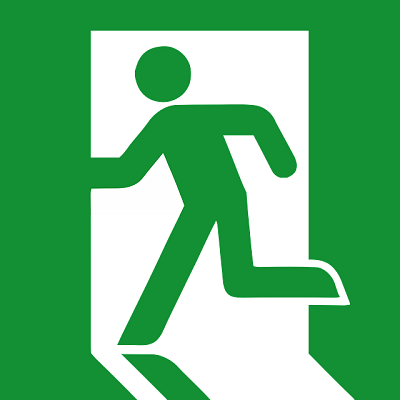Keeping employees and visitors free from harm by maintaining a safe workplace is a legal requirement. However, not all hazards are obvious, and that’s where safety signs come in. Here’s what you need to know about workplace safety signs.
Why Safety Signs?
The Management of Health and Safety at Work Regulations 1999 require that you risk assess your premises. They also say that where risks can’t be avoided or controlled, employers must put safety signs up. There is a legal duty to maintain the signs and familiarise employees with them. As well as the legal duty to have safety signs, there are also plenty of other reasons you should invest in them.
They Help Keep Safety Front and Centre
The most important function of safety signs is they remind employees to be cautious or aware of potential incidents. Increasing awareness can drastically reduce the chances of accidents or injuries.
Safety Signs Educate Employees
If you run a warehouse or factory, you’ll know that they’re inherently dangerous workplaces. Safety signs can help educate employees on best practices, especially new starters.
They Help Prevent Accidents
Safety signs are an important tool in helping prevent accidents. Accidents and injuries are costly for businesses. The compensation or sick pay you payout. The lost productivity. The legal trouble you could find yourself in. Investing in safety signs could help avoid all that.
Safety Signs Keep Workplaces Secure
There are certain areas in workplaces where you need to prevent unauthorised access. This is important for the security of the premises but also for safety. You don’t want unauthorised people to access valuable tools or stock. Neither do you want people in hazardous parts of the building where they aren’t supposed to be.
Types of Workplace Safety Signs
Go online and you’ll see that there are thousands of different workplace signs. This can make it tricky to know which signs your business needs. To make it easier for you, we’ll break them down into categories;
Prohibition Signs
These signs prohibit behaviour that is likely to cause a risk to health or safety. For example, a no-smoking sign in an area where there are flammable gases. These signs are usually red to indicate danger.
Warning Signs
These signs warn people of potential hazards and play an important part in making workplaces safer. A typical example of this type of sign is one that warns of an electric shock risk or slippery surface. These signs have a bright yellow background and a black outline of a triangle.
Mandatory Signs
These signs increase awareness of precautions you must legally take. For example, an ‘eye protection must be worn’ sign in an area where there are chemicals or machinery. These signs communicate the need for precautions so you don’t need to tell employees or visitors what to do every time. Warning signs are a blue circle with a white image or text in the middle. There’ll also be a rectangular box that contains important information.
Emergency Signs
First Aid
First Aid safety signs tell people what to do in the event of an emergency. They tell people the location of first aid kits, the names of first aiders, and what to do in an emergency. Emergency signs are green squares or rectangles with white text in the middle.
Fire Safety
Fire safety signs don’t just help you comply with the law. They also help reduce the risk of injury and property damage. They communicate information clearly and quickly, making it easier to identify and deal with an emergency. Fire safety signs tell you how to use fire extinguishers, tell you about fire doors, and warn of hazards. You’ll usually see fire safety signs in red, green, yellow, or blue. Some of them are made from photoluminescent PVC so they are visible in low light. An example of this would be signs directing you to a fire exit.
Safety signs help keep employees and visitors safe. They help keep your business legally compliant. Good quality signage around your workplace protects your people, your business, and its reputation. Don’t be an employer that puts your people or your profits at risk. Be a business that puts safety first. For more interesting articles on all things workplace-related, check out the rest of our blog.




